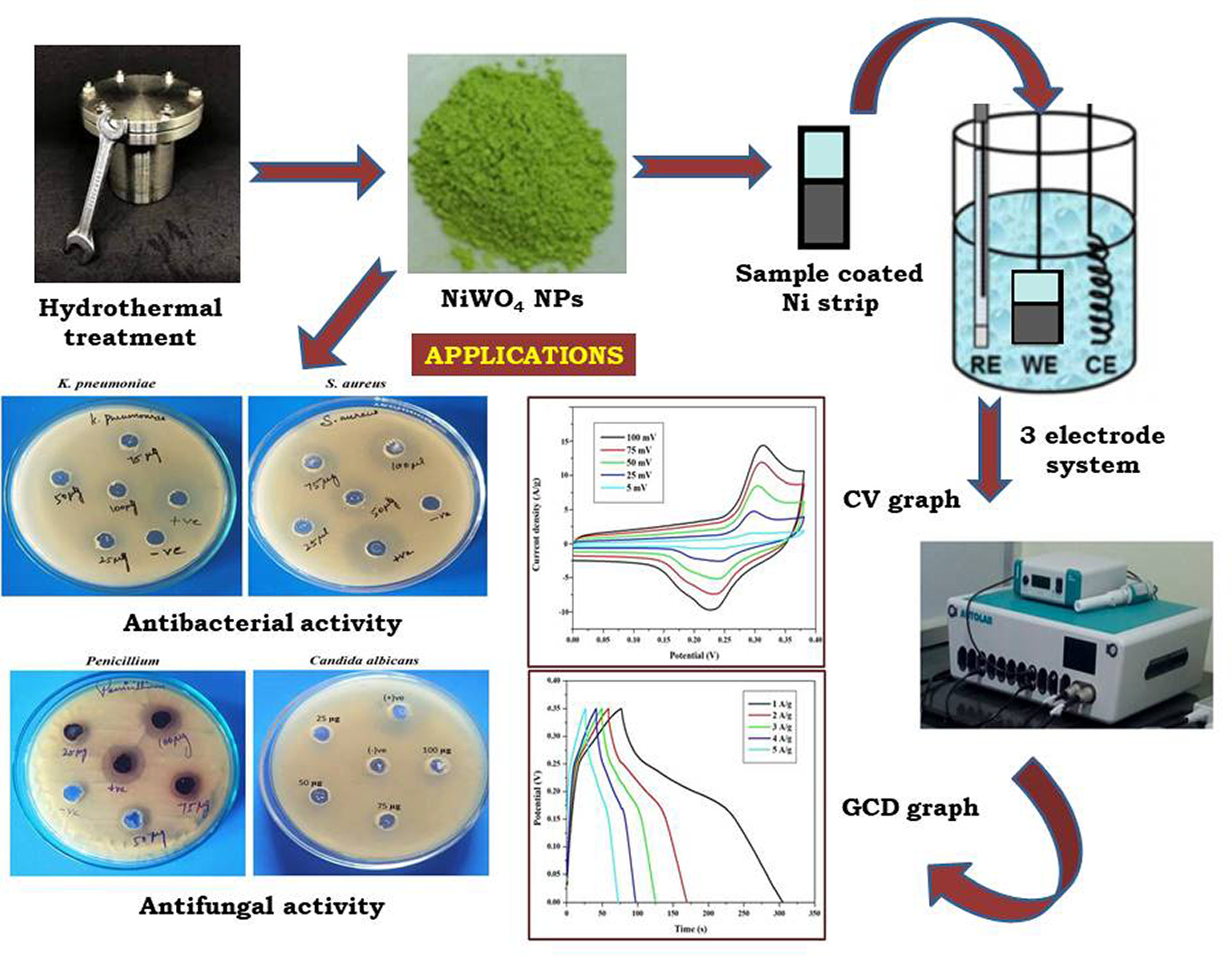https://doi.org/10.1140/epjp/s13360-025-06590-9
Regular Article
Multifunctional nickel tungstate nanoparticles: a dual approach for high-performance supercapacitors and antimicrobial applications
Department of Physics, Annamalai University, 608 002, Annamalai Nagar, Tamil Nadu, India
Received:
26
March
2025
Accepted:
24
June
2025
Published online:
10
July
2025
In this study, we report the synthesis and multifunctional evaluation of nickel tungstate (NiWO₄) nanoparticles, demonstrating their potential for both electrochemical energy storage and antimicrobial applications for the first time. This work investigates the effect of a reducing agent on the structural, morphological, electrochemical, and antimicrobial properties of NiWO₄ nanoparticles synthesized via a simple hydrothermal method. Structural characterization using X-ray diffraction (XRD) revealed a reduction in crystallite size from 72 to 47 nm upon NaOH addition, as calculated by the Scherrer formula. Scanning electron microscopy (SEM) and field-emission SEM (FE-SEM) confirmed the transition from micro- to nanosized particles, while high-resolution transmission electron microscopy (HR-TEM) provided further insights into particle morphology. Fourier-transform infrared (FTIR) spectroscopy confirmed metal–oxygen bonding, and Brunauer–Emmett–Teller (BET) analysis indicated a high specific surface area of 89 m2/g. X-ray photoelectron spectroscopy (XPS) analysis verified the oxidation states of the constituent elements. Electrochemical studies in 1 M KOH electrolyte demonstrated pseudocapacitive behavior with a high specific capacitance of 814 F/g at 1 A/g and excellent cyclic stability, retaining 93.5% capacitance after 2000 cycles, highlighting its potential as a supercapacitor electrode. Additionally, antimicrobial studies against various microbes exhibited significant inhibitory effects, demonstrating the dual functionality of NiWO₄ nanoparticles. This work underscores the potential of engineered nickel tungstate nanomaterials for energy storage and biomedical applications.
Copyright comment Springer Nature or its licensor (e.g. a society or other partner) holds exclusive rights to this article under a publishing agreement with the author(s) or other rightsholder(s); author self-archiving of the accepted manuscript version of this article is solely governed by the terms of such publishing agreement and applicable law.
© The Author(s), under exclusive licence to Società Italiana di Fisica and Springer-Verlag GmbH Germany, part of Springer Nature 2025
Springer Nature or its licensor (e.g. a society or other partner) holds exclusive rights to this article under a publishing agreement with the author(s) or other rightsholder(s); author self-archiving of the accepted manuscript version of this article is solely governed by the terms of such publishing agreement and applicable law.





